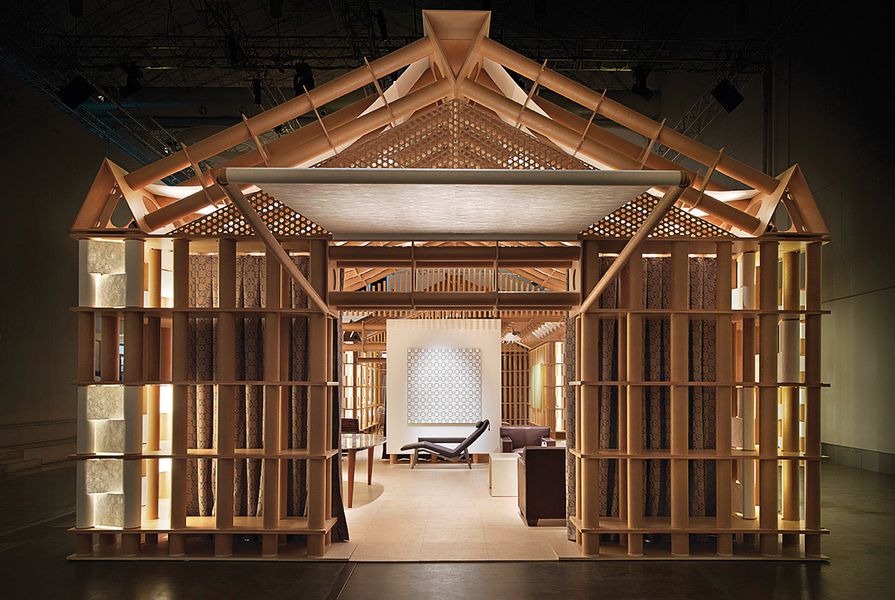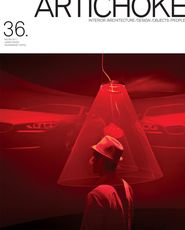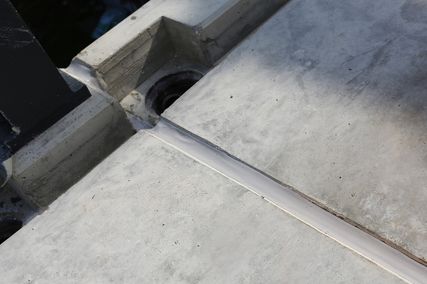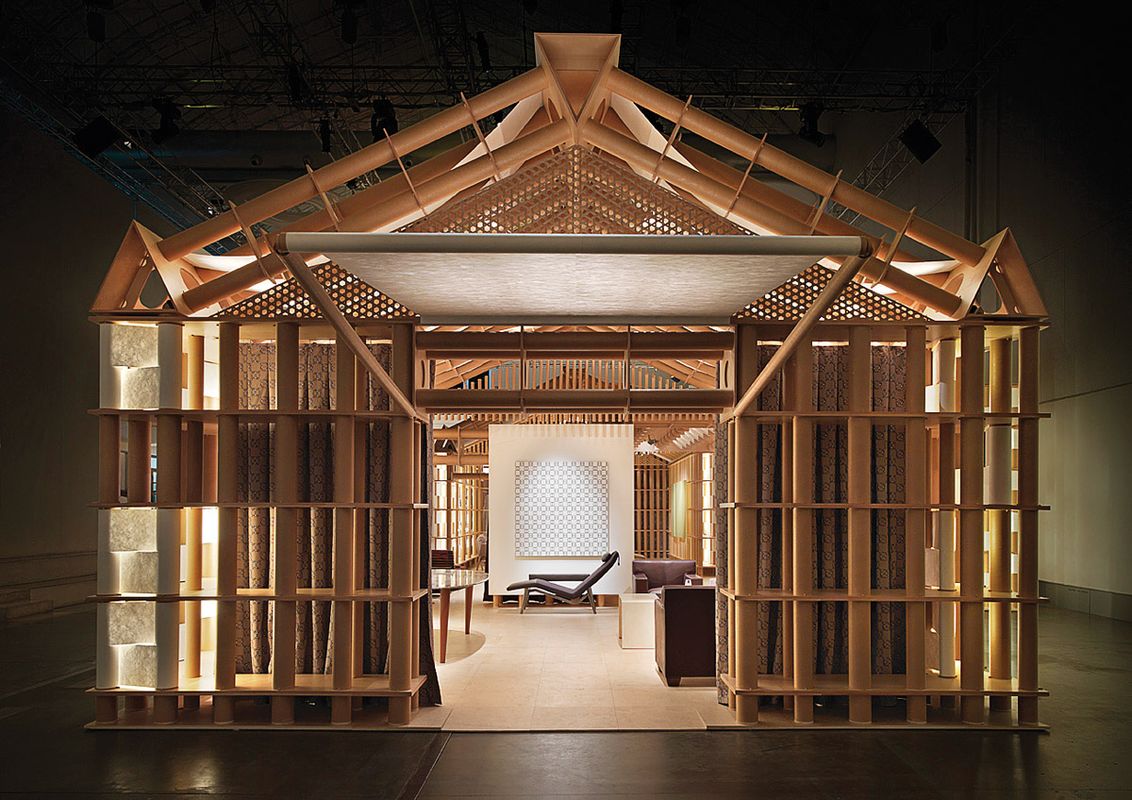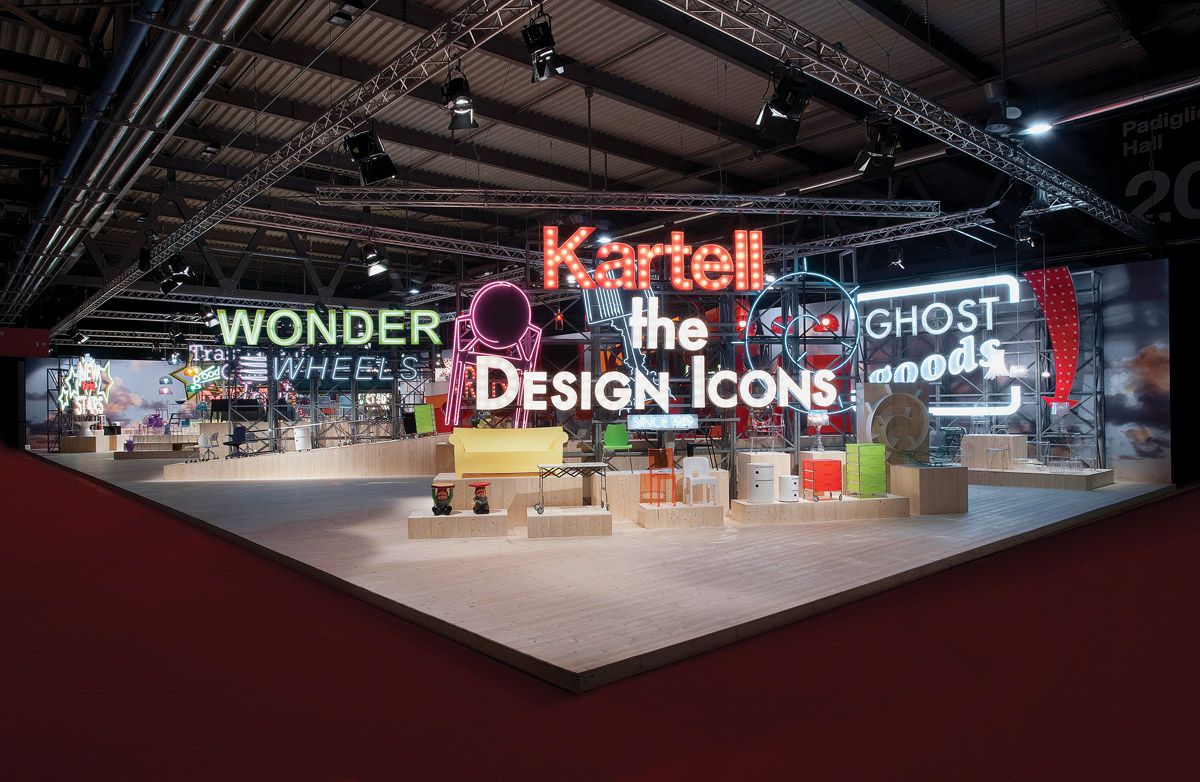Milan is a fair that caters for every visitor, no matter what corner of design excites them. For those keen to see the latest in commercial furniture, the fair at Rho Fiera is huge, offering pieces by all the best brands from Italy and around the world. Many of the major brands also have permanent design showrooms dotted throughout the city, with a number in the centre near the Duomo.
The nestrest outdoor seat was arranged in the garden at dedon in Zona Tortona.
Image: Nick Hughe, Yellowtrace
Showing commercial as well as a mix of experimental design, emerging design, exhibitions and installations, Zona Tortona has been steadily gaining momentum until this year, when a scandal involving drugs meant a new lot of organizers and less punch than usual. One good outcome for the area was that Superstudio was split into two locations – one for commercial design and another for emerging brands and designers. This is where New Zealander David Trubridge’s work took centre stage with an exhibit at the entry.
The Brera district, within walking distance of the Duomo, took on some of the lag from Tortona and was buzzing this year. The newbie, Ventura Lambrate, offered cheaper digs, mainly for emerging designers, with a big Dutch, Belgian and British component. Only in its second year, Lambrate is gaining traction as a legitimate alternative to Salone Satellite at Rho Fiera. The increasingly popular exhibition space Spazio Rossana Orlandi showed a significant number of alternative, thought-provoking and quirky designs.
The Kartell stand at the fair teamed timber and neon lighting.
Each year, there is a huge number of new chairs, sofas, tables, lights and design pieces on show. Brands develop and change – the stands for Vitra, Magis and Moroso were buzzing. For the first time, Kartell offered a selection of non-plastic furniture on what was widely accepted as the best stand at the fair. Tom Dixon, sick of the design-on-a-pedestal approach, created a “multiplex” complete with a restaurant called Parlement (a play on the name of chef Stevie Parle) and interactive theatre.
There were also some wonderful installations. Paul Cocksedge teamed up with Flos and BMW to make intelligent, almost magical use of LED lighting. Toshiba and Dorell Ghotmeh Tane Architects also focused on LEDs, with the setting a hundred-year-old building and the final destination a darkened room with water droplets lit by LEDs falling from the ceiling. Moroso teamed up with Tokujin Yoshioka to create a serene white room filled with mist. Shigeru Ban built a pavilion with paper tubes and sheet paper for Hermès Home. Italy’s rich history was present at locations including a restored fifteenth-century monastery that hosted the Paola Lenti exhibit, and showrooms such as Driade, where a fresco was revealed through a bookcase.
On display at Spazio Rossana Orlandi was work by Thomas Eyck.
This was Artichoke‘s first year at Milan with a film crew. Videographer Michael Stone and sound technician Mario assisted me and my colleague Jan Henderson to make a series of short interviews with well-known designers as part of the first Artichoke Cross. Shown at Designex during the same week as the fair, this is the beginning of a series of video content brought to you by Artichoke. To see the results, go to Architecture Media’s page at vimeo.com.
We filmed interviews with Piero Lissoni, Konstantin Grcic, Alain Gilles, Sarah K, Daniel and Emma and Flynn Talbot (as part of The Other Hemisphere), Tom Dixon, Paola Lenti, Helen Kontouris and Jeffrey Bernett.

